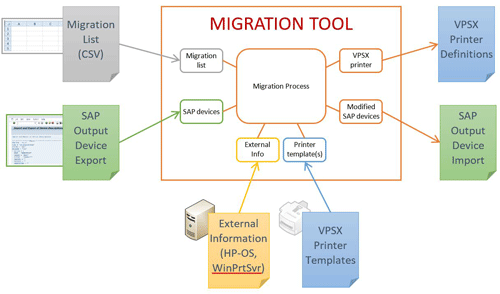Many large organisations recognise the value of Enterprise Output Management (EOM) and implement EOM solutions to reap the benefits thereof. Such solutions can become highly integrated with the core applications, infrastructure and destinations that generate and deliver business documents.
This is fine, assuming your EOM solution can easily adapt to the constantly-changing document requirements of the modern workplace. But what if you are faced with new demands that can't be met by your legacy EOM solution? For example, can your EOM software manage your SAP-generated documents along with your Windows/workplace output? Can you easily implement mobile print or pull-print functionality? Can you provide users with a new workplace experience? Can you dare to think of replacing your EOM solution?
In short, yes you can. It is never easy to pick apart years of integration and configuration. However, LRS offers a world-leading Enterprise Output Management solution to support your existing output processes and provide a platform for the future. We also have the tools and experience to migrate you quickly, efficiently and without risk to your critical processes.
Exiting the Software Solution Merry-Go-Round
There are a handful of reasons why organizations may decide to exchange their existing Enterprise Output Management software for a more comprehensive solution. Some reasons are internally-driven and some are based on external factors. Take the example of HP Output Server (HP-OS), which HP acquired from Dazel Corp. in 1999 and was recently sold again to OpenText Corporation.
The HP-OS/Dazel software was a popular and reliable solution at its peak, but the changing workplace and increasing demands for new document delivery methods have left it behind. At first glance, its many separate component pieces, complex architecture, and reliance on scripting make it appear difficult to remove from the document landscape.
However, the core of the LRS Enterprise Output Server—VPSX® software—can easily replace base Dazel functionality, and has 'Filter' processing capabilities to facilitate many areas of customisation. More importantly, it is a thoroughly modern platform that can address current and future output requirements. The product management and dedicated development teams at LRS work closely with our customers, prospects and printer partners to meet emerging requirements and trends in an effective and vendor-agnostic manner.
How, then, to perform a migration from HP-OS/Dazel to LRS? Let's consider the scenario where HP-OS/Dazel is being used to manage SAP-generated documents.
In the SAP system, defined output devices send data to HP-OS/Dazel output queues after which HP-OS/Dazel delivers the output to the end print destination. The SAP application knows the name of the Dazel queue, and HP-OS/Dazel knows the printer details, but neither component knows everything!
To extract all necessary information, link everything together, create the necessary LRS VPSX printer queues and modify SAP Output Devices to deliver to VPSX, LRS technical experts have developed a migration tool. The tool runs a series of steps to provide a complete configuration for VPSX and SAP.
First, the tool captures configuration information from HP-OS/Dazel so that it can define the printer in the VPSX solution and present a target queue to the SAP output device. The tool extracts queue and destination configuration from HP-OS/Dazel and creates a table indexed by the end destination (e.g., printer) so the VPSX solution knows the necessary attributes of the printers/destinations to which HP-OS/Dazel is delivering. It must also know the queue name that HP-OS is presenting for each destination to SAP. This can also be used to reveal any customisation that is running to provide specific output functions on particular destinations.
Next, we capture the SAP Output Device configuration and analyse the map between SAP Output Device and HP-OS/Dazel queue so we know how the SAP application delivers to HP-OS/Dazel.
Once these pieces of information are extracted, the LRS migration tool links everything together to produce a 'map' of SAP Output Devices and target printers/destinations. The tool uses this map to build the VPSX printer queue definitions and modify the SAP Output Definitions to deliver output to the appropriate VPSX printer queues.

One beneficial side-effect of this process is that redundant printer queues in your SAP system are identified and may be removed.
In an environment with multiple SAP systems, a typical approach is to migrate each SAP system on its own rather than pursue a “big bang” approach. The migration tool is semi-automatic to ensure an efficient, accurate and repeatable migration with minimal risk.
Once migration is complete, the Enterprise Output Management solution is managed by VPSX software and the rest of the LRS EOM suite via intuitive browser-based interfaces.
Outside of SAP environments, a similar approach is taken when VPSX software is replacing a "non-managed" output environment such as Windows Print Servers. Instead of printer/destination information coming from HP-OS/Dazel, the migration tool takes printer queue information from Windows Print Servers. With the VPSX solution also supporting Workplace Printing, the resulting managed output environment involves both SAP and Windows delivering to VPSX. Windows Print Server functions are eliminated from the landscape.
In summary, switching from one Enterprise Output Management solution to another can seem a daunting process. However, LRS teams have proven expertise in making this transition happen quickly, efficiently and with minimal impact on end users.
If you haven't dared to think about it until now, it's OK to start thinking!